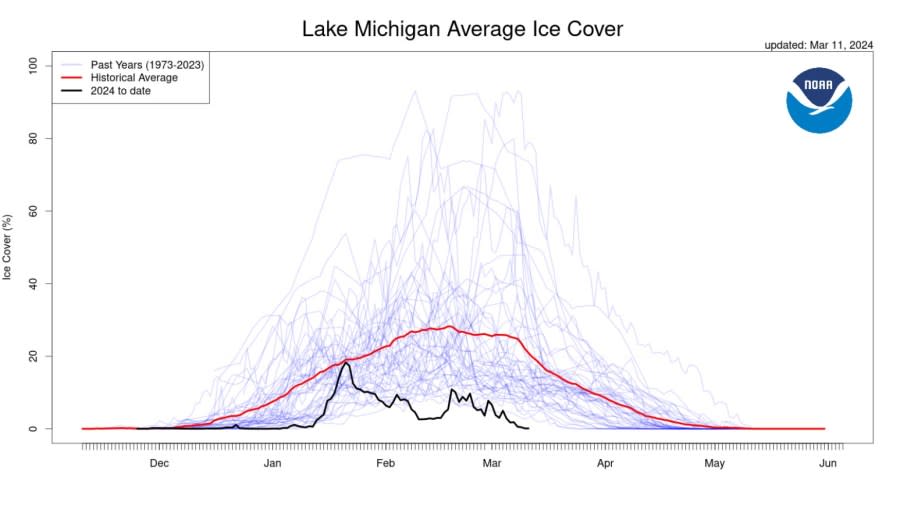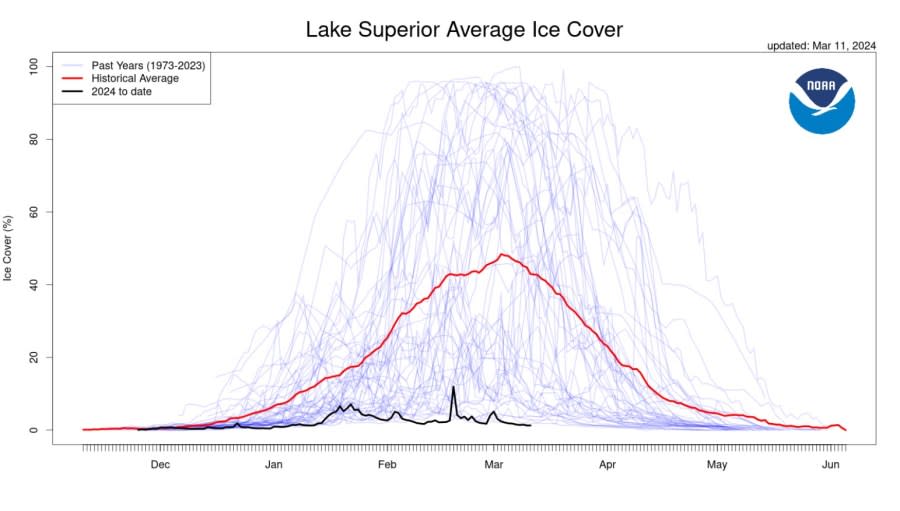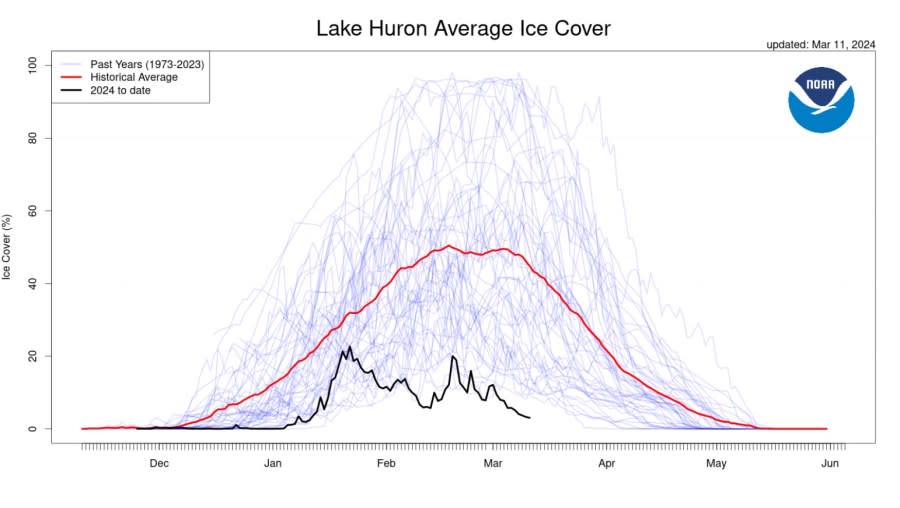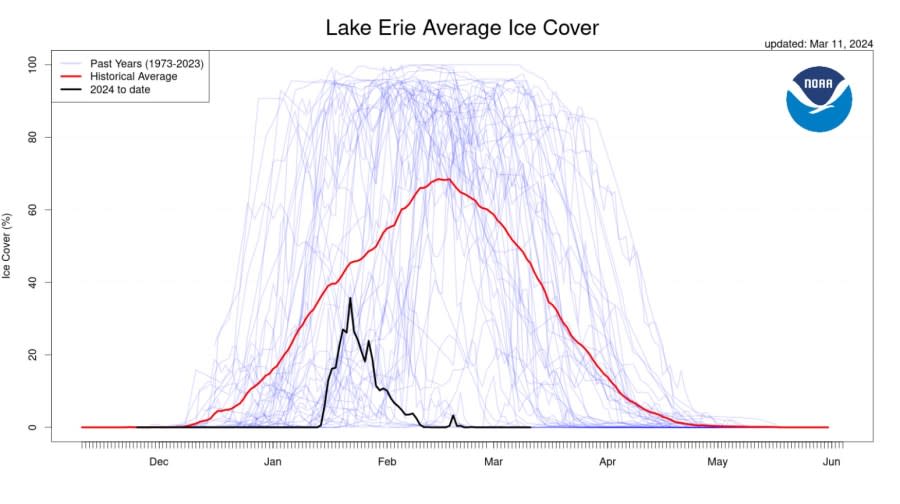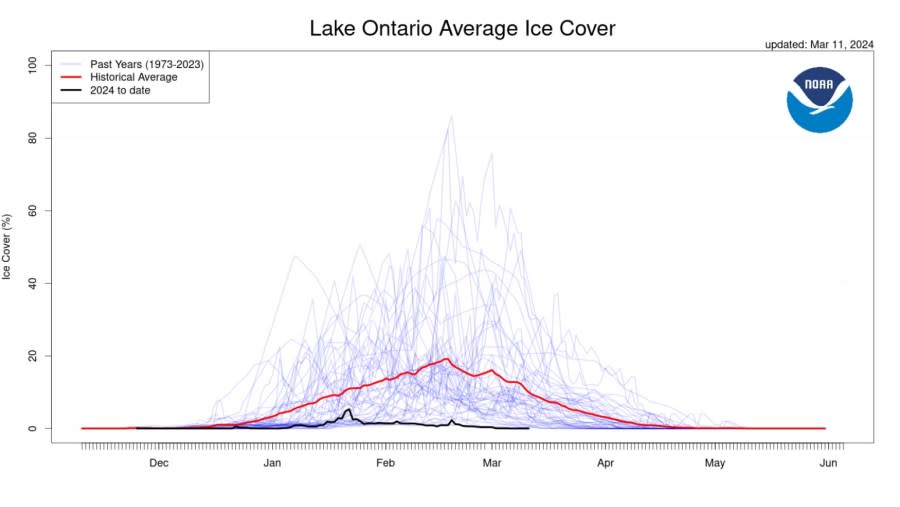Data: All 5 Great Lakes at record lows for ice cover

GRAND RAPIDS, Mich. (WOOD) — The Great Lakes have set a new record this mild winter. Data from the National Oceanic and Atmospheric Administration shows that all five Great Lakes are below the lowest ice levels on record at this point of the season.
As of Monday, only 1.21% of the Great Lakes were covered in ice. To put that in perspective, on March 11, 2022, the Great Lakes had nearly 39% ice coverage.
Scientists seek to understand impacts of lack of Great Lakes ice
Both Lake Erie and Lake Ontario have no ice coverage. Lake Michigan is almost completely thawed with only 0.11% ice coverage. Lake Superior has 1.26% ice coverage. Lake Huron has 3.04% ice coverage.
Data graphs of the ice cover on Lake Michigan from the National Oceanic and Atmospheric Administration Great Lakes Environmental Research Laboratory. (Courtesy NOAA) Data graphs of the ice cover on Lake Superior from the National Oceanic and Atmospheric Administration Great Lakes Environmental Research Laboratory. (Courtesy NOAA) Data graphs of the ice cover on Lake Huron from the National Oceanic and Atmospheric Administration Great Lakes Environmental Research Laboratory. (Courtesy NOAA) Data graphs of the ice cover on Lake Erie from the National Oceanic and Atmospheric Administration Great Lakes Environmental Research Laboratory. (Courtesy NOAA) Data graphs of the ice cover on Lake Ontario from the National Oceanic and Atmospheric Administration Great Lakes Environmental Research Laboratory. (Courtesy NOAA)
Outside of Lake Erie, every data point is the lowest on record for the 71st day of the year dating back to 1973. Lake Erie has been recorded at no ice coverage several times.
A strong El Niño pattern has made this winter quite mild, but researchers with NOAA’s Great Lakes Environmental Research Laboratory says trends have been moving this way for decades because of climate change.
The Arctic could be ‘ice-free’ within a decade, new study warns
“On average, we are seeing about 50% less ice now than we were in the early 1970s,” Bryan Mroczka, a NOAA GLERL meteorologist and physical scientist, told News 8 in January. “We are still going to see high-ice years, and we are still going to see low-ice years, but the average over the long period of time is decisively down.”
The lack of lake ice has several widespread effects on West Michigan. Less ice means less protection along the shoreline, which exacerbates erosion and wear and tear on coastal infrastructure.
Less ice also translates into more cloudy days and more lake-effect snow.
“Ice on the lakes shuts that lake-effect snow machine down,” Mroczka said. “If we keep the lakes open, we can see these large lake-effect events much deeper into the season.”
For the latest news, weather, sports, and streaming video, head to WOODTV.com.
